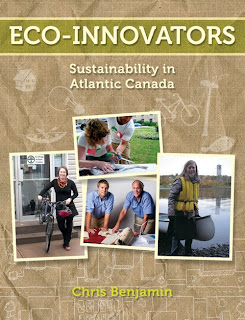A Certain Grace
Binnie Brennan’s short stories have appeared in a number of Canadian and American literary journals. Her best-selling novella, Harbour View, was shortlisted for an Atlantic Book Award, long-listed for the ReLit Award, and was co-winner of the 2009 Ken Klonsky Novella Contest. Recently AE spoke with the Halifax-based author (and musician!) about her most recent effort, a selection of short-stories called A Certain Grace.
What inspired/motivated you to put this collection together?
I wrote my first short story, “Duncan’s Lament,” in 2005, and I’ve been exploring the short story form ever since. A number of my closely linked stories became a novella, Harbour View (Quattro Books, 2009). I kept on writing new stories and rewriting old ones until I realized I had enough to fill a collection, so I checked in with John Calabro, my editor at Quattro. He hadn’t published short stories prior to this one – at that time Quattro published novellas and poetry books – but he was interested to see them anyway. Most publishers turn and run the other way if they see a story collection coming; I’m glad John kept an open mind.
What dictated which stories would appear?
Editor John felt that ten stories would make a good-sized collection. I sent him sixteen; he chose ten of them (including “Duncan’s Lament”) based largely on gut feel, is my guess. We made one story change late in the editing process, mutually agreed-upon, which gave us the title to the book.
Did the book come together quickly or did you really need to work at it?
Some of these stories I’ve been working on for years, but they weren’t perfect. I spent most of last summer revising them with help from my editor, very concentrated work, and at the same time I managed to write a couple of new ones. I pressed the final “send” on Labour Day, and then I collapsed for a week.
What was the most challenging aspect of the process?
First draft. The next story isn’t any easier than writing the last one; every time I’m starting with very few clues and no road map. On rare occasions, though, a story is handed to you. “How to Kill a Mannequin” was just such a gift – I dreamt the title and the man’s invented name, and those two clues were enough. I wrote the first draft in six hours. This was a first; it took nine months before I had a solid first draft of the previous story.
What was the most rewarding part of the experience?
Working with my editor, John Calabro. Pressing “send” on Labour Day, and then collapsing for a week.
What did you learn during the process?
I learned that sometimes I need to shut my mouth and listen to someone else’s thoughts on a substantive matter in order to make it work, and that sometimes I need to listen to someone else’s thoughts and then open my mouth and insist on what I know will make it work.
How did it differ from writing your novella?
This time around I was able to dig deeper in the rewrites, and my editor challenged me further.
Do you have a favourite story in the collection?
“Butterfly” is one favourite, and I’m quite partial to the collection of miniatures at the end, titled “A Certain Grace.”
What has the response been like so far from those that have read it?
The book is brand-new, and I’m just beginning to hear from people who’ve read it. One person told me that she’d felt the gamut of emotions reading it, and that she had the sense of knowing the characters all along. I like making people feel something; it’s a relief to me to know I’ve succeeded in some measure, at least with one reader.
What's next on your creative agenda?
More short stories. I’m looking at themes from childhood, a departure from Harbour View, which took place in a nursing home.
What made you want to be a writer?
I read a lot, a habit I formed as a child; and I come from a family of storytellers. I’ve always loved making stuff up and playing with words.
What makes a good book?
Believable characters and circumstances, effortless dialogue, and a good story.
Why do you think that Atlantic Canadians enjoy such a strong storytelling culture?
I think those of us who are from here largely come from story-telling stock, and those who choose to live here bring something new in their own brand of story-telling.
Do you have any advice for aspiring writers?
Read a lot. Keep writing. Read “The Strunk” (Strunk and White: The Elements of Style) and leave yourself open to what may come during the rewriting.http://www.binniebrennan.com/


